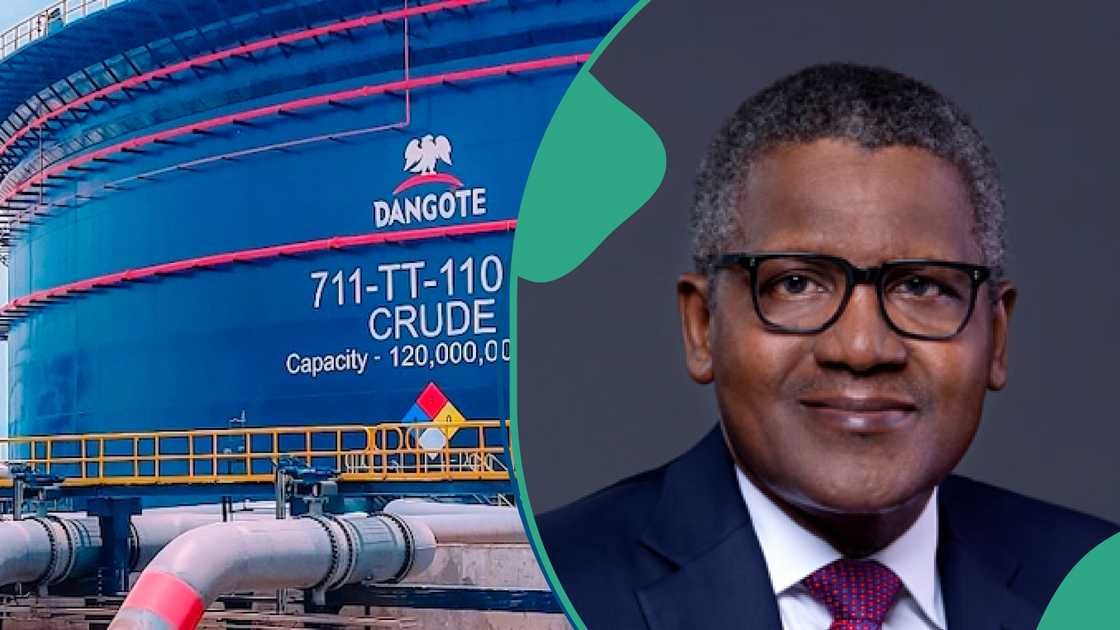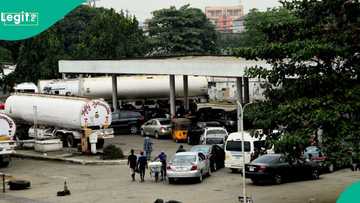Dangote Refinery Gets New Position as List of Top 10 Largest Oil Refineries by Capacity Emerges
- The Dangote Refinery has now gained recognition among the world's largest oil refining facilities by capacity
- A new list showing the world's largest oil refinery shows top refining plants as the world continues to rely on fossil fuels
- Dangote Refinery's position on the list will change when the facility completes its planned upgrade to 700,000 bpd-capacity at the end of 2025
Legit.ng’s Pascal Oparada has reported on tech, energy, stocks, investment and the economy for over a decade.
The world’s oil refining powerhouses are engineering marvels, each processing more than 500,000 barrels of crude daily.
These mega-refineries don’t just supply fuel; they dictate trade flows, price benchmarks, and even geopolitics.

Source: Getty Images
Here’s a ranked list of the 10 largest operational oil refineries as of 2025, including Nigeria’s Dangote Refinery, which now holds a new spot among global titans.
Jamnagar Refinery: Reliance Industries (India)
Gujarat, India: 1.24–1.40 million bpd
Commissioned in 1999, Jamnagar remains the world’s biggest single-site refinery.
With a staggering complexity index (~21.1), it handles deep conversion and exports fuel and chemicals globally. It’s the undisputed king of global refining.
Paraguaná Refinery Complex: PDVSA (Venezuela)
Falcón, Venezuela: 955,000 bpd
A union of the Amuay and Cardón refineries, Paraguaná is massive — though underperforming.
Political and infrastructural issues have hurt efficiency, but it remains central to Venezuela’s oil export strategy.
Ulsan Refinery: SK Energy (South Korea)
Ulsan, South Korea: 840,000 bpd
Asia’s refining beast, Ulsan, has matured since 1964 into a major exporter of jet fuel and gasoline.
Its integration with petrochemicals makes it a vital link in Asia’s energy chain.
Ruwais Refinery: ADNOC (UAE)
Abu Dhabi, UAE: 837,000 bpd
A twin-plant complex, Ruwais processes tough, high-sulphur crude with ease.
It fuels both domestic demand and regional exports, anchored by ADNOC’s strategic downstream network.
Yeosu Refinery: GS Caltex (South Korea)
Yeosu, South Korea: 730,000 bpd
Built through smart upgrades, Yeosu’s strength lies in its flexibility. It serves as a crucial supplier of refined products across the Asia-Pacific region.
Onsan Refinery: S-Oil (South Korea)
Ulsan, South Korea: 669,000 bpd
Part-owned by Saudi Aramco, Onsan is modern and highly automated. It supports fuel and chemical demand across Asia, including critical export markets.
Dangote Refinery: Dangote Group (Nigeria)
Lagos, Nigeria: 650,000 bpd (700,000 bpd by end-2025)
Africa’s biggest refinery, Dangote, is also the world’s largest single-train unit.
It’s revolutionising Nigeria’s energy market by reducing imports and turning the country into a refined products hub.
It plans to upgrade the facility from 650,000 bpd-capacity to 700,000 by the end of 2025.
Galveston Bay Refinery: Marathon Petroleum (USA)
Texas City, Texas: 631,000 bpd
This U.S. giant has high output and an export-driven model. It plays a central role in North America’s refining and petrochemical landscape.
Port Arthur Refinery: Motiva Enterprises (USA)
Port Arthur, Texas: 630,000 bpd
Owned by Saudi Aramco, Port Arthur can process a wide variety of crude types.
It’s a cornerstone of Aramco’s global refining strategy and U.S. supply resilience.
Al-Zour Refinery: KIPIC (Kuwait)
Al-Zour, Kuwait: 615,000 bpd
The Middle East’s newest mega-refinery, Al-Zour, boosts Kuwait’s refining independence. It was designed for ultra-modern operations, with a sharp focus on cleaner fuels and export leverage.
Why these refineries matter
From India’s Jamnagar to Nigeria’s Dangote and Kuwait’s Al-Zour, these refining giants define how the world gets its fuel.
Their scale, complexity, and export reach make them powerful engines of economic influence.

Source: UGC
As global energy trends shift, these mega-sites will remain key players in shaping tomorrow’s oil dynamics.
Dangote’s CNG truck rollout divides marketers
Legit.ng earlier reported that with the imminent deployment of 4,000 Compressed Natural Gas (CNG) trucks by Dangote Petroleum Refinery, Nigeria’s downstream oil sector is abuzz with both anticipation and anxiety.

Read also
GAIL Refinery takes shape: New 450,000-barrel plant to disrupt Nigeria’s petroleum landscape
The company’s free distribution model promises to cut costs for marketers but has sparked concerns about monopoly and job losses among industry players.
The Independent Petroleum Marketers Association of Nigeria (IPMAN) admits its members feel they have no real alternative.
Proofreading by James Ojo, copy editor at Legit.ng.
Source: Legit.ng





